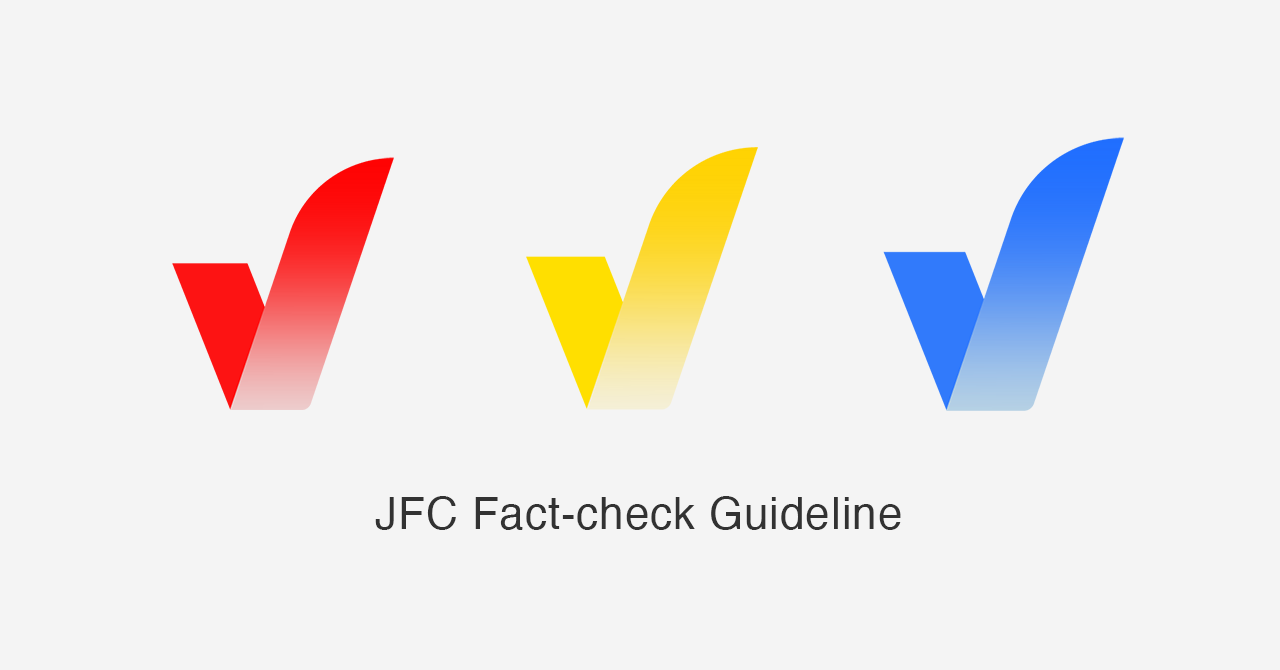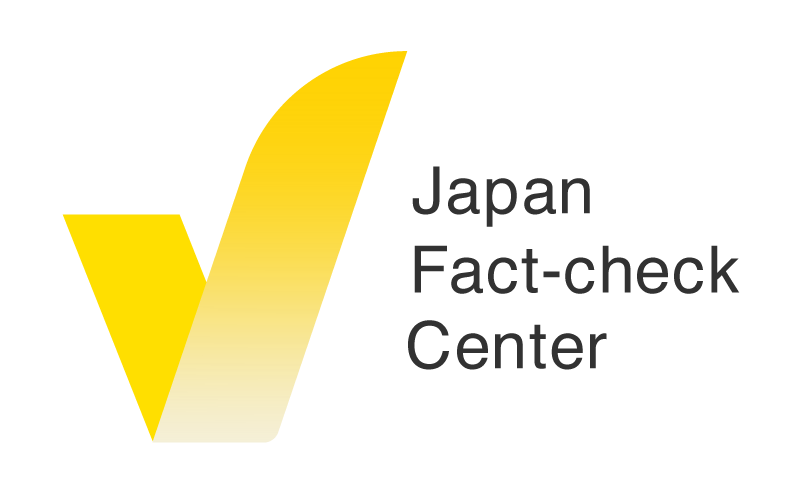JFC Fact-check Rules

The Japan Fact Check Center (JFC) has established fact-checking guidelines with reference to the International Fact-checking Network(IFCN)'s code of principles and ensure the impartial verification of facts. Detailed information can be found here(Only in Japanese), but this page will outline the overview, the methodology of actual verifications, and the criteria for judgments.
What is Fact-checking?
JFC conducts verification according to its own set of fact-checking guidelines.
JFC's guidelines define fact checking as follows
Verifying the facts contained in a discourse using objective facts to evaluate its accuracy (JFC Fact-Checking Guidelines).
Fact-checking, mainly spread on the Internet, taking into account its importance and impact, and accepting suggestions from users.
How to choose a target?
Among the myriad of discourses, the Japan Fact Check Center (JFC) selects subjects for verification based on three criteria: the breadth of people affected = "breadth," the severity of the impact = "depth," and the proximity of the impact = "closeness."
For the breadth of people affected, indicators such as the number of shares on social media or view counts on video platforms are considered. Additionally, information provided by users through LINE accounts and information submission portals is also taken into account.
The subjects of fact-checking are not opinions but the parts presented as "facts" within publicly disclosed discourse.
For instance, in the statement "The sky is cloudy. It looks like it might rain. Let's bring an umbrella," the fact-checking would focus on the verifiable part of the statement, which is "The sky is cloudy."
Verification Methodology
Fact-checking is meaningless if it is not trusted. We conduct our verification based on objective and scientific evidence in a fair and multifaceted manner. Sources of information and verification processes are disclosed as much as possible so that users can reproduce the verification themselves.
The verification will be conducted based on the following methodologies.
Objective and scientific verification
Ensure the objective and scientific credibility of the information sources used as the basis for verification, and when quoting experts, make clear the reliability of these experts as well.
Disclosure of Sources
The verification should not rely on anonymous information such as "according to the person concerned" as much as possible, but should clearly state the sources and links to the documents. Users themselves should be able to independently verify the information as a third party by confirming the basis for verification.
Context Explanation
To increase the reliability of the verification and to help users understand the information, we will also touch on the necessary contextual information.
Concise structure
Since redundant sentences tend not to be read, the verification should be concisely organized in the structure of "subject," "verification process," and "judgment.
Criteria for Judgment
The judgement criteria of JFC are as follows:
True: No errors, no critical elements missing.
Almost True: Contains some errors, but the majority of the discourse, including important parts, is correct and accurate enough.
Baseless: No or insufficient evidence and impossible to verify the facts.
Inaccurate: Some parts are correct, but there are errors or omissions in important parts. Or misleading.
False: There is a serious error. Or an important element is largely missing.
Corrections, Amendments, and Updates
JFC implements "open and honest corrections" in accordance with the Code of Principles set by IFCN. When we notice an error that may affect the judgment result and determine that a correction is necessary, we make the correction so that the corrected part can be identified and the reason for the correction is disclosed as much as possible.
For typographical errors and omissions that do not change the judgment result, we will take actions similar to corrections, such as "revise" depending on the situation. If the situation has changed over time (e.g., an expansion of damage reports during a disaster), although not an error, we will respond with an "update" or similar action.
